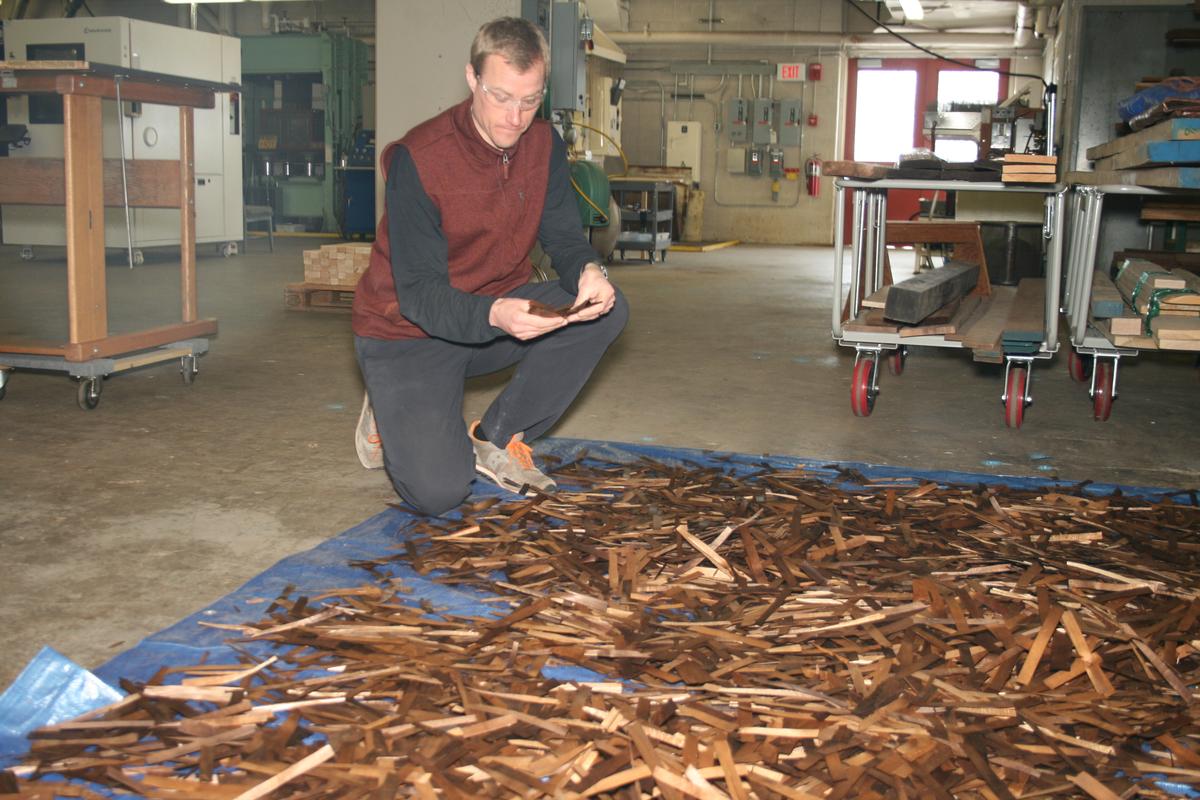Is there anything new to discover in using wood for building construction? There’s evidence that people have been building wood structures for some 10,000 years. Has it all been done?
Nope. Washington State University and NRRI submitted a provisional patent application this year for developing thermally modified cross-laminated strand-veneer timber building materials. With Mass Timber construction on the rise because of its sustainability benefits over competing materials, this innovation addresses some of the problems with wood.
Wood strand-based timber products aren’t new. (Think oriented strand board, OSB.) Wood strands are layered across each other and bonded together to make a board that’s strong, while using lower-value, less-desirable timber. But as everyone knows, moisture can damage wood. Thermal modification – basically cooking the wood in an oxygen-free kiln using a precisely controlled process – improves the moisture resistance of the wood and makes it more dimensionally stable. The wood also becomes more resistant to fungal decay.
With promising results at the bench-scale, NRRI and Washington State University are working with a company in Montana, Therma Wood Technologies, to scale up the process in commercial size kilns. Aro was able to visit the plant in October and bring in the WSU team via a live Zoom meeting.
“This is a really big step toward commercialization,” said NRRI Scientist Matt Aro. “We talked about how to thermally modify the wood strands, get even heating and the properties we need in the strands to make mass timber panels.”
The commercialization scale-up testing is being funded by National Science Foundation grant no. 1827434.
One of the key performance properties yet to be verified is the product’s fire performance – something all builders ask about. WSU received funding from the U.S. Forest Service to contract with an external lab to do large scale fire testing.
NRRI optimized the thermal modification process and processed thin wood strands at its kiln in Duluth to ship to Washington for fabrication into panels for testing.
“WSU’s Composite Materials and Engineering Center is a nationally known wood composites research center. We’ve been working with professor Vikram Yadama, project Principal Investigator, and his grad student, Ruben Jerves, who has done a great job making and testing the panels,” said Aro. “And we’ve applied for another U.S. Department of Agriculture grant to extend the research.”
The Forest Service is especially interested in the team’s focus on using underutilized trees that tend to grow very densely and can create forest fire danger. 2020 was an unprecedented fire season according to the National Interagency Fire Center. About 8.6 million acres burned, compared with 4.6 million acres in 2019. Climate change predictions show this trend continuing to rise, so forest management practices that remove some of the tinder is a top priority.
“Developing markets – especially high value and environmentally useful markets – for underutilized resources is something that I find critically valuable,” said Aro. “I’m really excited about the possibilities in thermally modified engineered wood products for job creation, green construction practices and practical uses for these tree species.”
Archive Photo 2019: Matt Aro inspects wood strands that were thermally modified in NRRI's pilot scale kiln before being sent to Washington State University.
